- Author Matthew Elmers [email protected].
- Public 2023-12-16 21:49.
- Last modified 2025-01-24 09:17.
Fight in the Prokhorovka area
On July 12, 1943, one of the largest battles of armored forces in world history took place on the southern face of the Kursk Bulge in the strip of the Voronezh front, near the Prokhorovka station and the Oktyabrsky state farm. In a fierce battle, the elite tank formations of the German Empire and the Soviet guards came together. Once again, the Russians and the Germans showed their highest fighting qualities.
The 5th Guards and 5th Guards Tank Armies, which arrived from the Stavka reserve, could be used in several ways. Divide the armies into parts and stop them from breaking through in the front line of defense; in full force to include in the third army defensive line or use for a strong counterstrike. A counterattack was preferable, since it made it possible to crush a part of the enemy's strike grouping (if successful, and the whole), already weakened by previous stubborn battles with units of the 6th Guards and 1st Tank Armies. The idea of the counterstrike was supported by the representative of the Headquarters A. M. Vasilevsky.
Planning for the counterstrike began around July 9, 1943. According to the original plan, Rotmistrov's army was to go on the offensive from the Vasilyevka line, the Komsomolets state farm, Belenikhino. In this area, it was possible to deploy large armored forces and break through to the Oboyanskoye highway located 15-17 km away. An auxiliary strike towards the 5th Guards Tank Army was to be organized by the 1st Tank and 6th Guards Armies. With a successful combination of circumstances, there was a chance, if not to surround and defeat the strike forces of the German group, then to inflict a serious defeat on it.
However, during the preparation of the strike - July 10-11, 1943, events occurred that seriously changed the situation at the front. The complication of the situation on the Korochansk direction forced the 5th Guards Mechanized Corps to be separated from the 5th Guards Tank Army and moved to the Korocha area. This weakened the striking power of Rotmistrov's army. Another unpleasant event was the breakthrough of the 2nd SS Panzer Corps into the Prokhorovka area and the capture by the Germans of the positions from which it was supposed to strike. However, they did not abandon the counterattack.

It should be noted that the German command had no information about the preparation of a serious counterattack by the Soviet troops. German aviation discovered a concentration of mobile units in the Prokhorovka area, but there was no information about what forces the Soviet command had collected. In the conditions of an offensive, a dense front and fierce battles, the collection of information by intelligence in the deep Soviet rear was impossible. The formations of Rotmistrov's army observed the radio silence and took all possible measures to camouflage, to ensure the surprise of the strike. German troops had already repulsed more than one blow of Soviet tank corps, so it was assumed that the Soviet command had pulled up another mobile unit from the reserve. Even on the evening of July 11, the command of the 2nd Panzer Corps had no idea about the power of the Soviet troops standing in front of them. Hausser's headquarters did not make any assumptions about the impending Soviet counterstrike. The German plan provided for an exit to Prokhorovka and a possible transition to the defense in anticipation of a Soviet counterstrike. However, on July 12, such a strike was not expected, or no longer expected, given the counterattacks of the Soviet tank corps in the previous days.
The 2nd SS Panzer Corps did not receive any serious offensive missions on 12 July. Local problems were solved. So the 1st division "Leibstandart" on July 11 occupied a defile (a narrow passage between natural obstacles) and did not undertake attacks in the direction of Prokhorovka, pulling up anti-tank weapons and preparing defensive lines. The division held the front about 7 km from the Psel River to the railway. By the evening of July 11, the Leibstandart tank regiment had 67 vehicles, including 4 Tigers, 10 self-propelled guns were in the assault gun battalion. Supporting flanks of Leibstandart, 2nd Panzer Division "Reich" and 3rd Panzer Division "Death's Head" were offensive, trying to improve their position. In particular, units of the "Dead's Head" division expanded the bridgehead on the northern bank of the Psel River, ferrying a tank regiment onto it on the night of July 12, thereby providing flanking fire on Soviet tanks in the event of an attack through a defile. The "Reich" division on the evening of July 11 consisted of 95 tanks and self-propelled guns, the "Dead's Head" division - 122 tanks and self-propelled guns (including 10 "Tigers"). The 3rd Panzer Corps operated from the south on the Prokhorovka direction, which had about 120 vehicles on the morning of July 12, including 23 Tigers in the 503rd separate heavy tank battalion.
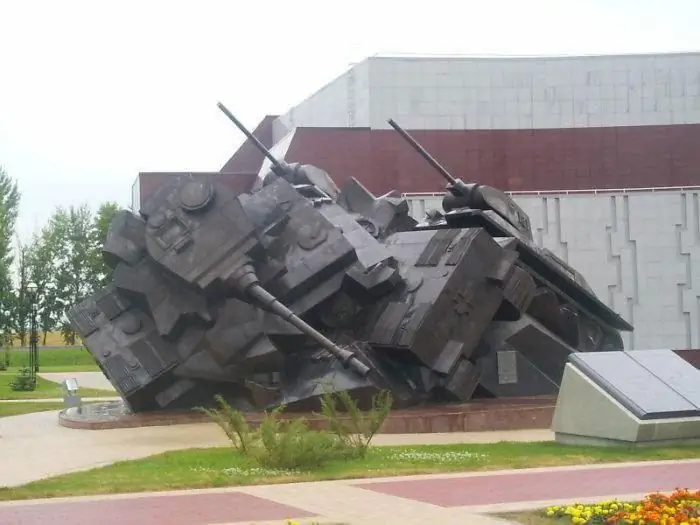
Battle
The capture by German troops of the starting positions for a planned counterstrike seriously complicated its implementation. Therefore, on the morning of July 12, the formations of the 9th Guards Airborne Division and the 95th Guards Rifle Division made an attempt to repulse the Oktyabrsky state farm. The attack began early in the morning, and the battle lasted for about three hours. Artillery preparation was not carried out, they were saving ammunition for the counterattack itself. But it was not possible to repulse the state farm with the help of fire weapons of rifle formations. The SS men met the guardsmen with concentrated fire and repelled the attack.
The artillery preparation of the army, which was scheduled for 8:00, was carried out along the line Vasilyevka - Komsomolets state farm - Ivanovsky settlement - Belenikhino, then the artillery transferred fire into the depths of the German order. The Soviet assault and bomber aviation had similar goals. As a result, the front line of defense of the Leibstandart, where the artillery was concentrated, was not affected by Soviet artillery and air strikes. In addition, in the morning the aviation operations were hampered by bad weather conditions.
At 8.30, after a salvo of guards mortars, the tankers attacked. Ivan Kirichenko's 29th Panzer Corps launched an offensive in two echelons along the railroad. The corps consisted of more than 200 tanks and self-propelled guns. In the first echelon, the 32nd tank brigade of Colonel A. A. Linev (64 tanks), the 25th tank brigade of Colonel N. K. Volodin (58 tanks) and the 1446th self-propelled artillery regiment (20 Su-76 and SU-122). In the second echelon: the 31st tank brigade of Colonel S. F. Moiseev (70 tanks) and the 53rd motorized rifle brigade, Lieutenant Colonel N. P. Lipicheva. On the right flank of the 29th corps, between Psel and the Oktyabrsky state farm, Boris Bakharov's 18th Panzer Corps attacked. The corps consisted of about 150 vehicles. The 18th Panzer Corps was lined up in three echelons. In the first were: the 181st tank brigade, Lieutenant Colonel V. A Puzyreva (44 tanks), the 170th tank brigade of Lieutenant Colonel V. D. it was armed with 20 tanks Mk IV "Churchill"). In the second echelon - the 32nd motorized rifle brigade of Colonel I. A. Stukov; in the third - the 110th tank brigade of Lieutenant Colonel M. G. Khlyupin (45 tanks). Thus, in the first echelon, 4 tank brigades, one regiment of heavy tanks and a regiment of self-propelled guns went on the offensive, about 250 vehicles in total.
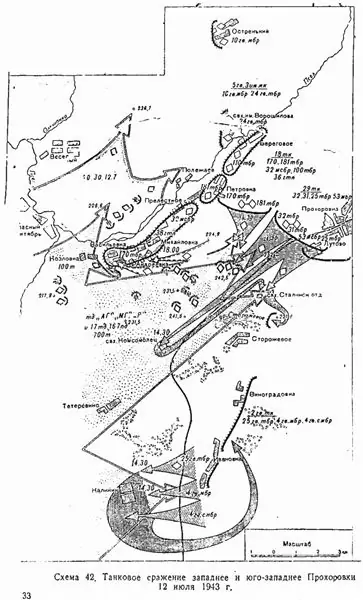
The area of the Oktyabrsky state farm had to fall into the "ticks". They were formed by the vehicles of the 181st tank brigade and the 36th separate regiment - on the one hand, on the other - the 32nd brigade, the 1446th self-propelled guns and the 170th tank brigade. They were followed by the rifle formations of the 33rd Guards Rifle Corps of the 5th Guards Army. It was believed that the 181st Tank Brigade, advancing along the river, would not meet with serious resistance. The 32nd Panzer Brigade was to pave the way for the main forces of the 29th corps along the railroad. The units of the 9th Guards Airborne Division and the 42nd Guards Rifle Division were to support their success.
It was not possible to achieve complete surprise in the attack of the tank corps of Rotmistrov's army. German aircraft detected the movement of large masses of tanks in the morning, and reported to the SS units. The command of the 2nd corps could no longer radically change the position, but nevertheless, a certain readiness to repel the blow of the formation managed to come.
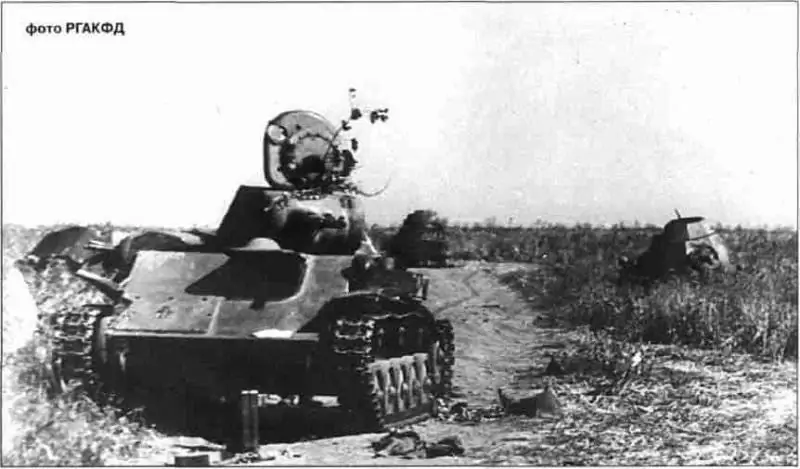
Padded T-70 and BA-64. Prokhorovskoe eg. 12-13 July 1943
The deep gully in front of the Oktyabrskiy forced the 170th Tank Brigade of the 18th Panzer Corps to be sent behind the 32nd brigade of the 29th Panzer Corps. As a result, the first echelon of the 18th corps was reduced to one brigade. The tanks of only two brigades, the 32nd and 181st (about 115 vehicles), entered the Prokhorovskoye field (from the Psel River to the railroad). The German anti-tank defense met the Soviet tanks with heavy fire, the tanks were knocked out one by one. Only one battalion of the 32nd brigade was able to go under the cover of a forest belt along the railway to the Komsomolets state farm. The further path was blocked by an anti-tank ditch. The entry into battle of the second echelon was late - it entered the battle only at 9.30 - 10.00, when a significant part of the armored vehicles of the first echelon was knocked out. Another brigade of the 29th Panzer Corps, Volodin's 25th Brigade, which was advancing through Storozhevoye, south of the railroad, encountered the Leibstandart assault gun battalion. By 10.30 the 25th brigade had lost more than half of the vehicles - only 21 T-34 and T-70 remained. The regiment commander Volodin was wounded and sent to the hospital. The results of the first two - two and a half hours of the battle were sad - three tank brigades and an ACS regiment lost more than half of their combat units.
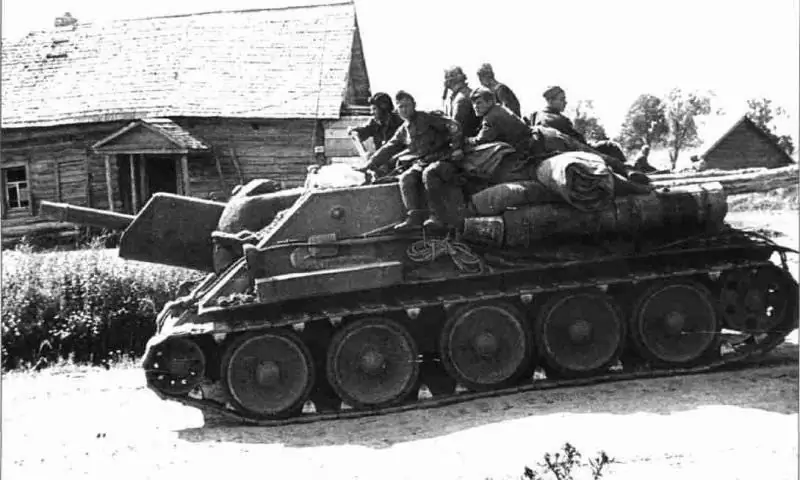
Soviet self-propelled howitzer SU-122 near the Prokhorovsky bridgehead. July 14, 1943
Similarly, events developed in the offensive zone of Bakharov's corps: the 170th brigade, which was put into battle after the 181st brigade, lost more than half of its tanks by 12.00. But at the cost of heavy losses, the 181st tank brigade made its way to the Oktyabrsky state farm. The tankmen were followed by the riflemen of the 42nd Guards Rifle Division, therefore, despite the fierce battle, when the state farm changed hands several times, this success was consolidated. At 14.00, the 18th corps resumed the offensive, bringing into battle the third echelon - the 110th tank brigade. Bakharov's corps somewhat swept the direction of the main attack, now advancing close to the Psela floodplain. Here the Soviet tankmen overcame the defenses of one of the regiments of the "Dead's Head" division, the heavy tanks of the "Leibstandart". The 181st and 170th brigades advanced 6 km here. Leibstandart managed to stabilize the situation only with the help of counterattacks by its tank regiment. The command of the 18th corps, under the threat of encirclement, because of the successful offensive of the "Dead's Head" division on the bridgehead on the river. Psel, pulled the brigades back. By evening, the corps of the 5th Guards Tank Army went over to the defensive.
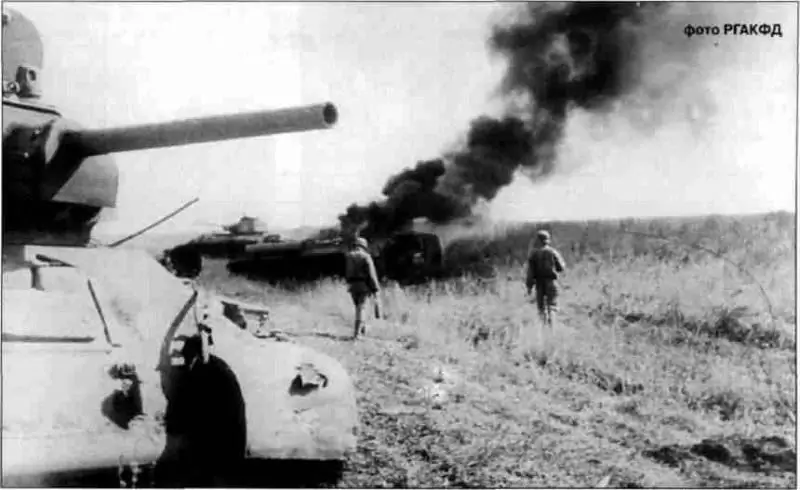
Tanks T-34, knocked out during the Soviet counteroffensive near Prokhorovka.
The 2nd Guards Tank Corps of Burdeyny also took part in the counterattack. He launched an offensive at 11.15 with two tank brigades (95 vehicles). The corps' attacks were repelled by the Reich division. The 2nd Panzer Division was shackled by these attacks for some time, but in the afternoon it launched a counteroffensive in the direction of Storozhevoye. The role of Popov's 2nd Panzer Corps in the battle was small. After the previous intense battles, only about fifty vehicles remained in it, and its attack, which began after 19.00 hours, had no success.
This counterattack of the 5th Guards Tank Army led to serious losses in the Soviet corps. Kirichenko's 29th corps lost up to 77% of combat units participating in the attack (170 tanks and self-propelled guns), Bakharov's 18th corps - 56% of vehicles (84 tanks). The mobile formations operating in neighboring sectors also suffered heavy losses: Burdeyny's 2nd Guards Tank Corps - 39% of those participating in the counterstrike (54 vehicles); 2nd Panzer Corps Popov - 22 tanks (almost half of the vehicles).
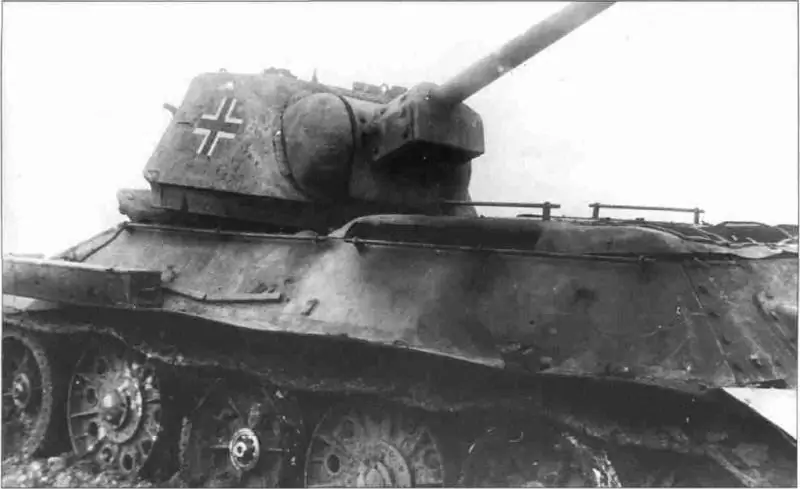
German T-34 division "Das Reich", knocked out by the crew of the gun of Sergeant Kurnosov. Prokhorovskoe eg. July 14-15, 1943
On July 12, the battle was fought not only in the Prokhorovka direction. The Soviet command set the task of the 5th Guards Army of Zhadov to destroy the bridgehead captured by German troops on the northern bank of the Psol. The forces of the "Dead's Head" division were supposed to be shackled by battle, and after the successful offensive of Rotmistrov's army, to be eliminated. However, the forces of the 5th Guards Army on the morning of July 12 were only in the process of concentration. On the perimeter of the bridgehead occupied by the SS in the morning there were only units of the 52nd Guards Rifle Division, which had been subdued by Zhadov's armies. The division took part in the Battle of Kursk from the first day of the battle and was drained of blood, having by the end of July 11 only 3, 3 thousand people. On the morning of July 12, the 95th Guards Rifle Division was supposed to deploy in this direction, and the 6th Guards Airborne Division was also approaching the battlefield.
The German command preempted the Soviet strike. The tanks of the 3rd Panzer Division "Dead's Head" were able to concentrate on the bridgehead. At 6 o'clock in the morning, the Germans launched an offensive. The formations of the 11th Panzer Division were also connected to the offensive. The positions of the weakened 52nd Guards Rifle Division were easily hacked, and the SS men struck at the units of the 95th Guards Rifle Division. In the middle of the day, the paratroopers joined the battle with the "Dead Head". To block the offensive of the German division, the artillery of the 5th Guards Army was attracted.
The counterattack of Soviet troops in the Prokhorovka area did not give the expected results. The 2nd SS Panzer Corps was not defeated and retained its combat effectiveness. However, this battle was one of the last in the course of the Kursk defensive operation. Already on July 12, the offensive of the Western and Bryansk fronts began on the northern face of the Kursk salient. The German 9th Army and 2nd Panzer Army went over to the defensive. A further offensive by the 4th Panzer Army of Gotha and the Kempf group in the Kursk direction became meaningless. Having advanced 35 km over July 5-12, Army Group South was forced, remaining on the reached lines for another three days, to begin withdrawing its forces to their former positions. During the Battle of Kursk, a strategic turning point came.
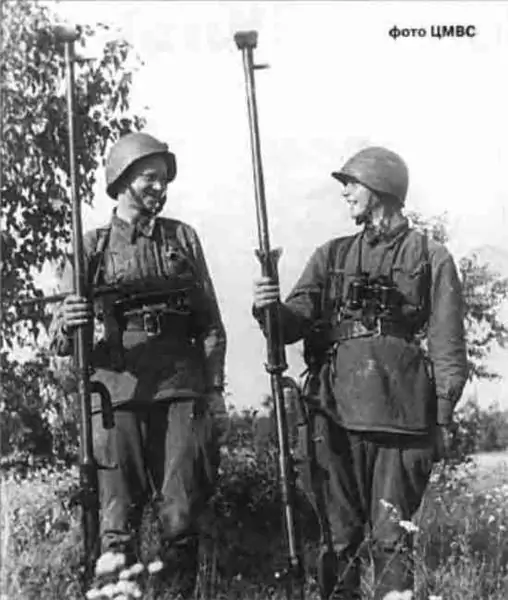
The best armor piercers of the 6th hectare. armies that knocked out 7 enemy tanks.
Fighting in the Belgorod direction
In this direction, the 7th Guards Army of Mikhail Shumilov held the defense. It consisted of the 24th and 25th Guards Rifle Corps: uniting the 15th, 36th, 72nd, 73rd, 78th and 81st Guards Rifle Divisions. The Seversky Donets River and the railway embankment strengthened the army's defenses.
On July 5, German troops on the Belgorod-Grafovka line, three infantry and three tank divisions of the Kempf group, with the support of aviation, began to cross the Seversky Donets. In the afternoon, German tanks launched an attack in the Razumnoye and Krutoy Log sectors in the eastern and northeastern directions. An anti-tank stronghold was located in the Krutoy Log area, which until the end of the day held back the enemy onslaught, repelling two major attacks. 26 German tanks were destroyed, some of them were blown up in minefields.
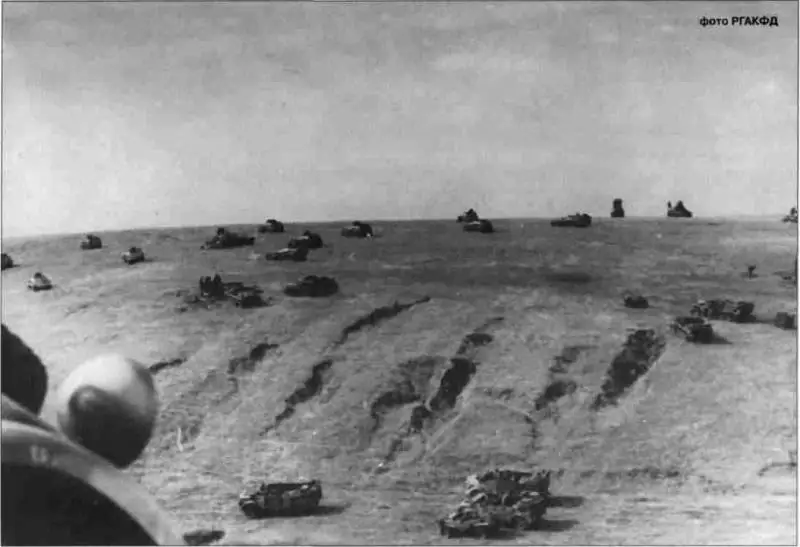
German motorized unit on the offensive in the Belgorod area.
On July 6, the German command continued its offensive in the northeastern direction. The front command reinforced Shumilov's army with several rifle divisions. The army also received the 31st anti-tank destroyer brigade and the 114th guards anti-tank artillery regiment. The junction of the 7th and 6th Guards armies was reinforced with the 131st and 132nd separate battalions of anti-tank rifles. The most stubborn battles took place in the Yastrebovo area, where the enemy was advancing in a group of up to 70 tanks. The enemy's blow was taken over by the 1849th IPTAP. By the end of the day, the artillery regiment repulsed four major enemy attacks, knocking out 32 tanks and assault guns. To strengthen its defense, the 1853th IPTAP was put forward, it was placed in the second echelon.
By July 7, the German command brought up the artillery, and in the morning a strong artillery preparation began, at the same time the German aviation was delivering strikes. After a powerful air raid and artillery preparation, tank units went on the attack. The Germans advanced in two directions: an armored group of 100 vehicles attacked along the Razumnaya River; another strike group of up to 100 tanks delivered a frontal attack from height 207, 9 in the direction of Myasoedovo. The infantry could not withstand the blow and retreated from Yastrebovo, leaving the artillery regiments without cover. The infiltrated German infantry began shelling the flanks and rear of the artillery positions. The artillerymen had a hard time, repelling the attacks of enemy tanks and infantry at the same time. However, the breakthrough on the left flank was stopped by the artillerymen of the 1853 IPTAP stationed in the second echelon. In addition, units of the 94th Guards Rifle Division approached. But in the evening, the infantry positions were again processed by German artillery and aircraft. The shooters left Yastrebovo and Sevryukovo. The artillery regiments, which had already suffered heavy losses in the daytime battle, could not hold back the onslaught of German tanks and infantry, and withdrew in battle, taking all the guns, including the damaged ones.

German tanks in the battle for the village. Maksimovka. Belgorod direction.
On July 8-10, the German troops did not carry out active operations, the matter was limited to local battles. However, on the night of July 11, the enemy struck a strong blow from the Melekhovo area to the north and northwest, trying to break through to the Prokhorovka area. The units of the 9th Guards and 305th Rifle Divisions holding the defenses in this direction could not withstand the powerful blow and retreated. The 10th anti-tank artillery brigade was transferred from the Stavka reserve to strengthen the defense in this direction. The 1510th IPTAP and a separate battalion of anti-tank rifles were also brought up. The formations of the 35th Guards Rifle Corps and artillery units held back the enemy offensive.
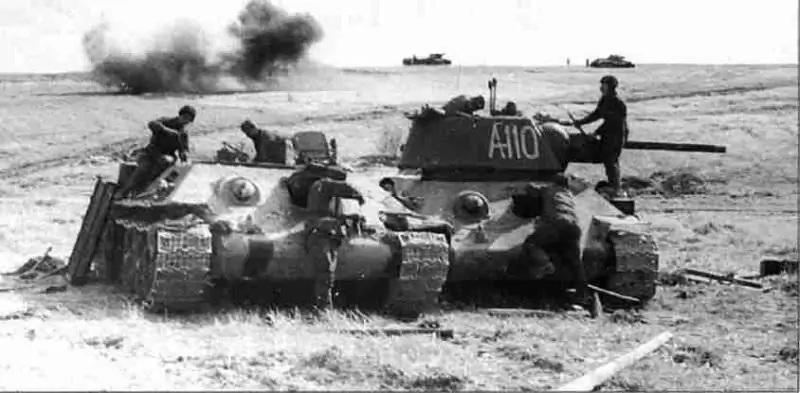
Repairmen are restoring a damaged tank. Field repair brigade of Lieutenant Shchukin. July 1943
On July 14-15, German troops carried out the last major offensive operation on the southern face of the Kursk salient. The 4th Panzer Army and the Kempf group launched converging strikes on Shakhovo from the Ozerovsky and Shchelokovo regions in order to encircle and destroy the Soviet troops defending in the Teterevino, Druzhny, Shchelokovo triangle. Here the defense was held by units of the 48th Rifle Corps of the 69th Army and the 2nd Guards Tank Corps. German troops were able to surround some of the Soviet formations. This was the last success of Army Group South in the Battle of Kursk. Large losses were avoided. Soviet troops held most of the previously occupied positions, and even counterattacked (parts of the 2nd Guards Corps of Burdeyny). The Germans were unable to destroy the encircled Soviet units, they went to the location of their troops. The offensive of German troops on the southern face of the Kursk Bulge ended, under the cover of strong rear guards, the main forces of Army Group South began to retreat to their original positions.
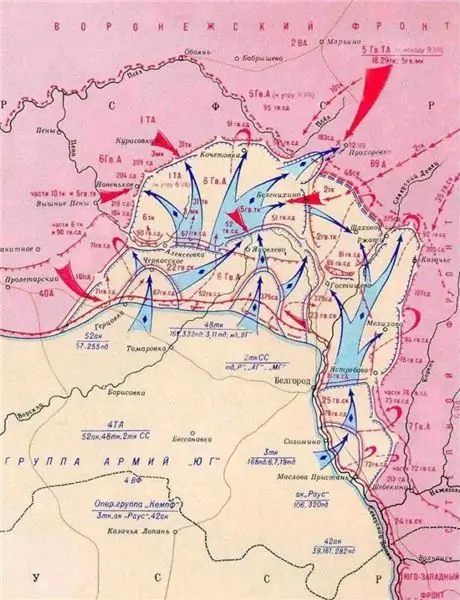
Brief summary of the defensive battle
- Operation "Citadel" ended in failure of both German army groups - "Center" and "South". On the northern face, the Germans went on the defensive by July 12, when the troops of the Western and Bryansk fronts began the Oryol offensive operation (Operation Kutuzov). The failure of the offensive of the 9th German Army of Model made senseless the continuation of the offensive of the 4th Panzer Army on Kursk. The last offensive operation was carried out by the 4th Panzer Army and the Kempf Group on July 14-15, 1943. Then the command of Army Group South began to withdraw its troops. The reserve 24th Tank Corps and the 2nd SS Panzer Corps, withdrawn from the Battle of Kursk, were sent to repel the Southern Front's offensive on Mius and strike the Southwestern Front (Izyum-Barvenkovskaya offensive operation).
- The troops of the Central, Voronezh and Steppe fronts, with the support of the reserves of the Headquarters, withstood the enemy strike. A turning point occurred in the Battle of Kursk. The Red Army went on the offensive - on July 12 in the Oryol direction, on August 3 in the Belgorod-Kharkov direction. The victory in the Battle of Kursk marked the final transition of the strategic initiative in the war to the USSR. The battle was the last attempt by the German military-political leadership to turn the tide on the Eastern Front in their favor. As a result, the Battle of Kursk became a decisive turning point in the Great Patriotic War.
- The Central Front lost 33, 8 thousand people on July 5-11, Model's 9th Army lost more than 20 thousand people. The Voronezh and Steppe fronts lost 143.9 thousand people during the period from 5 to 23 July 1943.
- The hope of the German command for a "miracle weapon" did not justify itself. Soviet troops had enough funds - anti-tank artillery, corps, army and headquarters artillery, minefields, tanks in order to stop and destroy the German "miracle tanks". The hope for the depletion of the forces of the Red Army in the Battle of Kursk was not justified either. On the Oryol direction, Soviet troops launched an offensive on July 12, 1943. And the Voronezh Front recovered its strength by the beginning of August and launched an offensive in the Belgorod-Kharkov direction.
- The experience of "deliberate defense" in the Battle of Kursk shows that any defense is flawed. Thanks to an operational pause of several months, the Soviet command was able to create a powerful defense and form large reserves. But the German strike groups, skillfully interacting with aviation, artillery, tanks and infantry, broke through the defensive lines of the Soviet armies. Concentration of forces in a narrow area gave good results. This is also evidenced by the losses, when the Soviet troops, defending themselves in strong positions, lost more people and equipment than the enemy.
Sources:
Vasilevsky A. M. The work of a lifetime //
Isaev A. Antisuvorov. Ten Myths of the Second World War. M., 2006.
Isaev A. Liberation 1943. "From Kursk and Orel, the war brought us …". M., 2013. //
Zamulin V. Forgotten Battle of the Fire Arc. M., 2009.
Zamulin V. Kurskiy break. M. 2007. //
Zhukov G. K. Memories and reflections. T. 2. //
Battle of Kursk //
Kursk Bulge, July 5 - August 23, 1943 //
Manstein E. Lost Victories. //
Oleinikov G. A. Prokhorovka battle (July 1943) //
Rotmistrov P. A. Steel Guard. //
Rokossovsky K. K. At the Central Front in the winter and summer of 1943. //
Timokhovich I. V. Soviet aviation in the battle of Kursk. //






